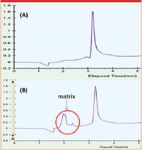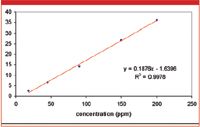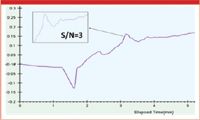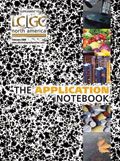An Acetonitrile Free Chromatographic Methodology for Melamine Detection and Quantitation Using SFC
The global economic downturn, particularly the collapse of the automotive and associated industries, has caused an overall reduction in the demand for acrylonitrile. Since acetonitrile is obtained as a co-product in the production of acrylonitrile, the pharmaceutical, food, environmental, and chemical industries are experiencing an unprecedented acetonitrile shortage. This shortage has resulted in a sharp price increase, in some cases as much as 6-8 times; and the price is projected to remain high even after the production returns to normal.
The global economic downturn, particularly the collapse of the automotive and associated industries, has caused an overall reduction in the demand for acrylonitrile. Since acetonitrile is obtained as a co-product in the production of acrylonitrile, the pharmaceutical, food, environmental, and chemical industries are experiencing an unprecedented acetonitrile shortage. This shortage has resulted in a sharp price increase, in some cases as much as 6-8 times; and the price is projected to remain high even after the production returns to normal.
Acetonitrile is among the most commonly used organic solvents in reversed phase liquid chromatography (RPLC), mainly due to its miscibility with water, acceptable UV absorptivity, and reasonable viscosity. The ongoing acetonitrile shortage has forced chemists to either reduce their solvent usage by using shorter, narrower columns packed with small particles; or replace acetonitrile with more readily available solvent such as methanol. One has to realize, though, that since acetonitrile and methanol are situated at vastly different segments of the solvent/selectivity triangle (1), transfer from an acetonitrile based method to a methanol based one is hardly straightforward.
To this end, supercritical fluid chromatography (SFC) certainly holds great potential in becoming an attractive alternative to acetonitrile-reliant RPLC. In SFC, supercritical CO2 in combination with one or more polar organic solvents, predominantly alcohols, is used as the mobile phase. Due to the lower viscosity and higher diffusivity of supercritical fluids, SFC is a fast separation technique of inherently high chromatographic efficiency, comparable to ultra-performance liquid chromatography (UPLC) in both speed and efficiency. Furthermore, SFC has been demonstrated to cover as wide a range of compounds in both functionality and polarity as RPLC, but also compliment RPLC in selectivity, particularly for extremely polar and non-polar analytes owing to its normal phase separation mechanism. For example, Pinkston et al. (2) published their study comparing SFC-MS with LC-MS in analyzing a total of 2266 diverse, pharmaceutical relevant compounds. They concluded that SFC-MS is suitable for screening large and diverse libraries of molecules. The percentages of eluted and correctly identified compounds from both methods were statistically equivalent. Coincidently, acetonitrile/water was used as the mobile phase in the LC-MS analyses.
In this brief note, we report our effort in developing an acetonitrile-free SFC based chromatographic methodology for fast detection and quantitation of melamine in infant formula. Melamine is a nitrogen-rich heterocyclic compound. When adulterated in protein based food products, it can falsely boost apparent protein content based on the Kjedahl method where nitrogen is used to assess the protein content. In March 2007, imported pet food ingredients contaminated with melamine caused kidney and renal failure in dogs and cats across the United States. In 2008, infant deaths were reported in China, believed to be associated with the ingestion of infant formula contaminated by melamine. In response to the public outcry for rapid and accurate melamine detection and quantitation in food safety testing, the U.S. Food and Drug Administration (FDA) and instrument manufactures have proposed analytical approaches based on gas chromatography (GC), reverse phase ion-pairing LC (both traditional and ultra-performance or rapid resolution), and ion exchange LC. It is noted, however, that acetonitrile was employed in all LC based approaches. With the acetonitrile shortage looming large, we want to demonstrate the applicability of SFC in melamine detection and quantitation; but more importantly, use this application as an example to stimulate more acetonitrile-free SFC applications in lieu of acetonitrile based LC ones.
Experimental
Melamine standard was purchased from Sigma-Aldrich. LC grade methanol was purchased from EMD. Infant formula was purchased from a local supermarket. A Thar Method Station II analytical SFC (Thar Instruments, Pittsburgh, PA) equipped with a Gilson UV detector and a 2-ethyl pyridine column (4.6×150 mm, 6 μ, Princeton Chromatography, Princeton, NJ) were used in this study. For all experiments, CO2 (mobile phase A) and methanol (mobile phase B) were used as the mobile phase, the flow rate was 3 ml/min, column temperature was 40 °C, UV wavelength was 210 nm, and injection volume was 10 μl. A generic gradient of 5–50 B% over 5 min was used. It is noted that sample clean-up and extraction is an integral part of melamine detection and quantitation, but beyond the scope of this brief application note. An FDA developed sample preparation protocol to monitor melamine in powdered milk products (3) was therefore adopted with minor modifications. In brief, the protocol involved dissolution, protein precipitation, and sample filtration.
Results and Discussion
Figure 1a shows the SFC chromatogram of melamine neat solution. Melamine elutes at 3.28 min, in the middle of the gradient, indicating a reasonable retention on the pyridine column. It has to be pointed out that analysis time can be further reduced by using a higher flow rate. The low viscosity of supercritical fluids offers a unique advantage for SFC. In SFC, a much higher flow rate (as much as 8 times LC) can be used for the columns of the same dimension without experiencing a formidable back pressure elevation. Figure 1b is the chromatogram of an infant formula sample spiked with melamine after undergoing the sample preparation process. It can be clearly seen that virtually all the inherent sample matrices are well resolved from melamine, providing a good foundation for ensuing quantitative work.

Figure 1: SFC chromatogram of melamine: (a) neat solution; and (b) spiked formula with melamine.
A set of serial dilutions of melamine neat solution was performed to construct a calibration curve ranging from 15 to 200 ppm. The results are summarized in Figure 2. Based on the calibration curve, the calculated melamine concentration in the spiked formula (Figure 1b) was 73 ppm, well agreeing with the actual concentration of 71 ppm. Five formula samples spiked with known concentrations of melamine were also analyzed (results not shown) and the recoveries range from 73 to 103%, similar to what was achieved using the same protocol followed by LC analyses (70–115%), both conforming to the FDA guidelines.

Figure 2: Standard calibration curve for melamine ranging from 15 to 200 ppm.
The limit of detection (LOD) and limit of quantitation (LOQ) of this methodology are estimated to be 1 ppm and 15 ppm, respectively. The chromatogram at the LOD is shown in Figure 3. These are similar to what can be achieved using LC UV. Significant improvement in LOD and LOQ are expected with mass spectrometric (MS) detectors. SFC MS has become a routine analytical tool in many pharmaceutical and chemical laboratories, and SFC MS-MS is currently being evaluated by both users and manufacturers.

Figure 3: SFC chromatogram of melamine at 1 ppm.
Conclusions
In this preliminary study, it is demonstrated that SFC UV can be used for rapid and accurate melamine determination in infant formula. The linearity of quantitation, LOD, and LOQ are on par with published LC UV assays following a similar sample preparation protocol. The analysis time for SFC is shorter than traditional LC. The mobile phase used in this SFC methodology is a mixture of readily available CO2 and methanol; and this should be welcome by many laboratories affected by the current acetonitrile shortage.
References
(1) L. R. Snyder, J. J. Kirkland, J. L. Glajch ed. Practical HPLC method development, 2nd ed., pp34–39, John Wiley & Sons, 1997.
(2) J. D. Pinkston, D. Wen, K. L. Morand, D. A. Tirey, D. Stanton, "Comparison of LC/MS and SFC/MS for Screening of a Large and Diverse Library of Pharmaceutically Relevant Compounds," Anal. Chem. 2006, 78, 7467–7472.
(3) S. Turnspseed et al. "Determination of melamine and cyanuric acid residues in infant formula using LC MS/MS," LIB No 4221, volume 2, October 2008.n0

TharSFC, a Waters Company
575 Epsilon Drive, Suite 100, Pittsburgh, PA 15238
tel. (412)967-5665, fax (412)967-9446
Email: info@tharsfc.com Website: www.waters.com/sfc

The Benefits of Custom Bonded Silica
April 1st 2025Not all chromatography resins are created equal. Off-the-shelf chromatography resins might not always meet the rigorous purification requirements of biopharmaceutical manufacturing. Custom bonded silica from Grace can address a wide range of separation challenges, leading to real performance improvements. Discover more about the latest innovations in chromatography silica from Grace, including VYDAC® and DAVISIL®.
5 Things to Consider When Selecting a Chromatography Silica
April 1st 2025Particularly in the pharmaceutical industry, drug purity isn’t just a goal – it’s essential for achieving safety, stability and efficacy. However, purification is easier said than done, especially with challenging molecules like DNA and RNA “oligonucleotides,” due in large part to their diversity and the range of impurities that can be generated during production. Enter DAVISIL® chromatographic silica, with a wide range of pore diameters and particle sizes to meet your specific application, performance and sustainability requirements. Before you choose the chromatography resin for your next purification application, take a look at these 5 considerations.
Automating Protein Purification: Efficiency, Yield, and Reproducibility
March 27th 2025Recent advancements in automated protein purification stress the importance of efficiency, scalability, and yield consistency. This eBook compares different purification platforms, highlighting their impact on downstream applications and demonstrating how automation enhances throughput and process control.
MilliporeSigma: Ultrapure Water for Sensitive LC-MS Analysis of Pesticides
March 25th 2025The aim of the study was to illustrate the efficiency of Milli-Q® water purification systems in eliminating pesticides from tap water, thereby producing and delivering reliable and consistent-quality ultrapure water suitable for pesticides analysis















